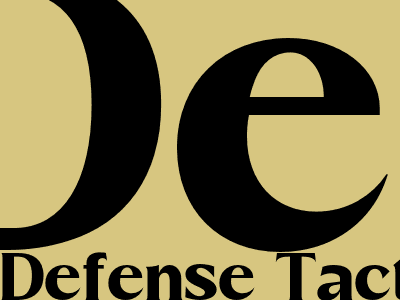
The Defense Tactical Radio Market: A Comprehensive Analysis
Witnessing Robust Growth Through 2030: Key Drivers and Trends
Introduction
The defense tactical radio market is poised for remarkable growth over the next decade. This surge is attributed to several key drivers and trends shaping the industry landscape.
This comprehensive analysis provides a deep dive into these factors, exploring their impact on the market's trajectory.
Key Drivers
Increased Demand for Secure Communications: Modern warfare relies heavily on secure and reliable communication systems. Defense tactical radios play a crucial role in ensuring battlefield connectivity and preventing eavesdropping.
Technological Advancements: Rapid advancements in technology, such as software-defined radios and cognitive radios, enhance the capabilities and efficiency of defense tactical radios.
Growing Threats and Conflicts: The rising geopolitical tensions and the emergence of new threats have led to increased demand for effective communication systems for defense and security forces.
Key Trends
Network Centric Warfare: The adoption of network-centric warfare approaches necessitates seamless communication among various military units, requiring advanced tactical radios with networking capabilities.
Integration with Other Systems: Defense tactical radios are becoming increasingly integrated with other systems, such as command and control systems and unmanned aerial vehicles, enabling real-time data sharing and enhanced situational awareness.
Cybersecurity Concerns: The proliferation of cyber threats has heightened the need for robust cybersecurity measures in defense tactical radios to protect against unauthorized access and data breaches.
Market Growth
The defense tactical radio market is projected to witness a robust compound annual growth rate (CAGR) of 6.5% during the forecast period of 2022-2030.
This growth is driven by the increasing demand for secure and reliable communication systems, coupled with technological advancements and the rising geopolitical uncertainties.
The market is segmented into various categories, including frequency bands, modulation techniques, and applications. Each segment is expected to contribute to the overall market growth.
Competitive Landscape
The defense tactical radio market is characterized by a competitive landscape with established players and emerging challengers.
Key players include Harris Corporation, Thales Group, and L3Harris Technologies. These companies have a strong market presence and offer a wide range of defense tactical radio solutions.
However, the market is also witnessing the emergence of new entrants, particularly from the commercial sector, offering innovative and cost-effective solutions.
Conclusion
The defense tactical radio market is poised for significant growth in the coming years. Driven by key drivers and trends, such as increased demand for secure communications and technological advancements, the market is expected to witness a robust CAGR.
To stay competitive, defense contractors and other stakeholders must embrace innovation, invest in research and development, and adapt to the evolving needs of the industry.